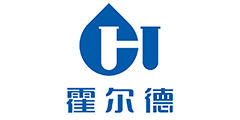请高人翻译一下//请问手套箱里送的一对小皮碗垫,是如何使用的?
-
请问手套箱里送的一对小皮碗垫,是如何使用的?今天打开手套箱,才发现里面放了一对小皮碗垫,用塑料袋装着的,上面没中文,只印了,日文和英语等说明,请各位高人给翻译下:IMPORTAN... 请问手套箱里送的一对小皮碗垫,是如何使用的?今天打开手套箱,才发现里面放了一对小皮碗垫,用塑料袋装着的,上面没中文,只印了,日文和英语等说明,请各位高人给翻译下: IMPORTANTTO PRE-DELIVERY INSPECTOR:INSERT THESE RUBBER PLUGS INTO THE HOLES OF THE CENTER FLOOR SIDE MEMBER EXTENSIONS. 展开
全部评论(1条)
-

- 殇情d岁月 2016-12-01 00:00:00
- 这对小零件不是给购车人用的,也不是什么“皮碗垫”,而是给售车前质检员的提示:(售车前)把这对橡皮件插入底盘中部下端的连接口。这不是购车人的工作。你应该问车行是怎么回事。
-
 赞(3)
赞(3) 回复(0)
回复(0)
热门问答
- 请高人翻译一下//请问手套箱里送的一对小皮碗垫,是如何使用的?
- 请问手套箱里送的一对小皮碗垫,是如何使用的?今天打开手套箱,才发现里面放了一对小皮碗垫,用塑料袋装着的,上面没中文,只印了,日文和英语等说明,请各位高人给翻译下:IMPORTAN... 请问手套箱里送的一对小皮碗垫,是如何使用的?今天打开手套箱,才发现里面放了一对小皮碗垫,用塑料袋装着的,上面没中文,只印了,日文和英语等说明,请各位高人给翻译下: IMPORTANTTO PRE-DELIVERY INSPECTOR:INSERT THESE RUBBER PLUGS INTO THE HOLES OF THE CENTER FLOOR SIDE MEMBER EXTENSIONS. 展开
2016-11-30 03:53:20
577
1
- 有谁可以详细的介绍一下电视机的/彩色滤光片/
2013-08-11 03:52:17
326
1
- 水准仪的使用步骤/?
- 详细的.... 详细的. 展开
2013-09-11 14:49:16
500
3
- 什么是色牢度/雪呢尔的英文??//
2005-11-20 02:05:02
449
1
- 请问酸式盐/碱式盐+酸/碱生成物是什么?
- 酸式盐+酸====? 酸式盐+碱====? 碱式盐+碱====? 碱式盐+酸====? 以上四条都会反应吗? 分别生成什么? 在这之间强酸、弱酸、强碱、弱碱的反应会有区别吗?(有例子Z好~谢谢)
2007-11-09 10:42:13
488
4
- 化学高手请告诉我:/醛、酮、羧酸/三者之间的关系
- 越详细越好!答案好的会有加分
2007-11-01 09:19:53
395
5
- 吸声/消声/隔声/减声, 其间差异如何!?
2011-08-07 12:06:36
389
3
- 请帮我鉴别一下 朋友送的钻石戒指 是真是假?
- 说是周大福的1克拉钻戒 在香港买的 等级是VVS2 D级别 10万港币 可是 我发现钻石内圈刻着PT950爱丽儿 D101ct 这两个字样 在网上查好像爱丽儿是另一个品牌 所以有些怀疑 请专业人士指教 非常感谢
2010-10-27 06:26:13
514
2
- 请帮忙翻译一下,拜托
- A new kind of TiO2 nanotube array/Ni(OH)2 (TiO2/Ni(OH)2) composite electrode with the storage ability of light energy was prepared by the deposition of Ni(OH)2 on the TiO2 nanotube array, which was synthesized by anodizing Ti foils in an HF... A new kind of TiO2 nanotube array/Ni(OH)2 (TiO2/Ni(OH)2) composite electrode with the storage ability of light energy was prepared by the deposition of Ni(OH)2 on the TiO2 nanotube array, which was synthesized by anodizing Ti foils in an HF aqueous solution. SEM and XRD results showed that Ni(OH)2 particles were well distributed on high density, well-ordered and uniform TiO2 nanotube arrays. The photoelectrochemical properties of the TiO2/Ni(OH)2 electrode were investigated in NaHCO3/NaOH buffer solution (pH 10) by means of UV–vis absorption spectra, cyclic voltammogram (CV) and photocurrent measurements. It was found that the TiO2/Ni(OH)2 electrode was highly sensitive to light and exhibited excellent photoelectrochromic properties. Upon UV irradiation, the photogenerated holes by TiO2 nanotube arrays can oxidize Ni(OH)2 to NiOOH, and thus the TiO2/Ni(OH)2 electrode can be photo-charged by light。1. Introduction Among many visible light photocatalysts, TiO2nanostructures have attracted much attention due to high photocatalytic activ-ity, nontoxicity, chemical stability and huge potential applications [1–6]. The TiO2 nanotube array is one of most attention-getting TiO2nanostructures because of large surface area and outstanding charge transport properties. TiO2nanotube arrays can be utilized in dye-sensitized solar cells[7–9], photocatalysis and hydrogen gas sensing [10]. So far, a variety of methods have been attempted to prepare TiO2 nanotube arrays, such as hydrothermal synthe-sis[11], Langmuir–Blodgett technique [12], solution casting [13] and anodization technique[10,14], etc. Among these methods, the anodization technique has many advantages of low cost, low tem-perature and easy to be scaled up to large-area preparation. Recently, anewkindof photo-functional systemwith theenergy storage ability has been developed by coupling TiO2 photosen-sitive electrode with energy storage materials. In Takahashi and Tatsuma’swork[15],aTiO2/Ni(OH)2bilayer thinfilmwas suggested for the oxidative energy storage. In this case, a redox-activep-type semiconductor Ni(OH)2is coupled withn-type TiO2photocatalyst to formap–njunction,WhenTiO2is illuminatedby light, holesgen-erated at the junction are separated from excited electrons, trans-ported into the bulk of Ni(OH)2and oxidized Ni(OH)2to NiOOH. Therefore, the oxidative energy storage system was constructed 展开
2012-11-13 20:08:52
443
1
- 翻译翻译,请高手帮我翻译一下这个说明
- Followthesysteminstallationinstructionscarefullyandinthespecifiedorder.ThesoftwaremustbeinstalledonthecomputerbeforeconnectingtheUSBcable.2.1FacilitiesRequirementsFacilit... Follow the system installation instructions carefully and in the specified order. The software must be installed on the computer before connecting the USB cable. 2.1 Facilities Requirements Facilities requirements for the alpha-SE system are listed in Table 2-1 and the system dimensions are given in Fig. 2-1. As shown in Fig. 2-2, the alpha-SE tool requires a clear work area of 20 by 18 inches (500 by 460 mm), excluding the operator computer. 2.2 Unpacking the Hardware Opening the Shipping Container Move the alpha-SE shipping container to the area where the tool will be installed. Open the container and remove the top and side pieces of packing foam. Carefully remove all smaller components from the shipping container, verifying that you received all components, as shown in Fig. 2-3. Finally, remove the alpha-SE ellipsometer and position it on your clear 20” by 18” (510 by 460 mm) workspace. Caution: The alpha-SE ellipsometer without sample chuck weighs approximately 37 lbs. (16 kg.). Please find an assistant to lift the alpha-SE unit out of the shipping carton and on to clear work surface. 展开
2008-06-22 06:30:36
755
4
- 倒置型显微镜/单目/双目/三目/生物显微镜/倒置显微镜
- 要买个显微镜,参数要达到以下所有 : 观察头双目镜筒:固定式双目镜筒,镜筒倾角为45度。目镜10×(F.N.20)调焦通过物镜转盘的上下移动进行调... 要买个显微镜,参数要达到以下所有 : 观察头双目镜筒:固定式双目镜筒,镜筒倾角为45度。目镜10×(F.N.20)调焦通过物镜转盘的上下移动进行调焦(载物台高度固定)微调精度2微米。聚光镜备有可拆装的超长工作距离聚光镜(数值孔径为0.3,工作距离为72mm)照明系统光源:备有6V30W卤素灯和灯插座(U-LS30-3-2),内装毛玻璃片和吸热滤光片,照明部可拆装;滤色镜座:拆装型滤色镜座,可插装Z大厚度11mm的直径45mm滤色镜;孔径光阑:手柄型;插座插入部:备有相差法用滑座套,内装滑座定位点停机构.垂直荧光照明装置:照明装置可拆装,备有观察法转换用滑座(三个转换位置:B激发位、G激发位、透射光位或U激发位)荧光光源:50W汞灯,荧光光闸:有,荧光视场光路:有,荧光激发块:2激发块(B,G,U)滤色镜:1个滤色镜,可调心型相衬法用滑座: 4×、10×/20×、一个空孔(40×任选,预调心型)供电装置: 连续光强可调, 内置电压转换开关(100/120V、220/240V)。 4孔式转换器;UIS2光学系统;平面载物台:160×250mm,可安装标本夹具,附有孔径35mm的皮式培养皿托座,机械式载物台:备有右手用低位置同轴X、Y向传动旋钮,载物台行程:载物台接长板:70×180mm,X=120mm,Y=78mm。附有3种培养皿、标本用托座 展开
2014-09-11 22:51:39
548
1
- 如何彻底清除http://localhost:9000/application.pac脚本
- 在删掉PPLIVE加速器后,虽能正常上网,但无法清除其使用的自动脚本,请高手给予彻底解决的办法,多谢!
2010-03-03 06:31:25
356
4
- BK-6B 桥式测力/称重传感器如何使用
2018-11-20 16:07:18
293
0
- 请教英语高人,帮忙翻译一下.急用,谢谢!!!
- Theelementalcontentofrawmaterials,phosphogypsum,substrate(potassiumsalt),products(superphosphateand“Amofoska”),soil,andgrasswasdeterminedusingconventionalandepithermaln... The elemental content of raw materials, phosphogypsum, substrate (potassium salt), products (superphosphate and “Amofoska”), soil, and grass was determined using conventional and epithermal neutron activation analysis using the IBR-2 pulsed fast reactor at Frank Laboratory of Neutron Physics (FLNP), Joint Institute for Nuclear Research (JINR), Dubna, Russia. The analytical procedure was described elsewhere by Frontasyeva and Pavlov [15]. Quality control was based on the application of certified reference materials (CRMs): IAEA-336 (lichens), IAEA-SDM (lake sediment) and IAEA-SL1 (soil). The certified values and the results obtained by NAA were compared (Table 2). Concentrations of most elements were in good agreement with the CRMs except for Ti, Ni, Ce, Eu, Dy and Rb, which differed from the certified value as follows: Ti - 41.7 %, Ni - 26.5 %, Ce - 24.3 %, Eu - 32.9 % and Dy - 33.3 % in IAEA-SL1 (soil) and Rb - 20.6 % in IAEA-336 (lichens). For the 21 elements in agreement with the certified values the bias observed was below 20 %. For 11 elements (Al, V, Mn, As, Br, Sc, Cr, Sm, Na, Co and Sb), the bias ranged from 0.03 % to 5 %, for 5 elements (Fe, Zn, Ba, Th and Cs) the bias was greater than 5 % but lower than 10 %, and for 5 elements (La, Tb, Hf, Ta and U) the bias was determined to be between 10 % and 20 %. Samples of raw materials, phosphogypsum, substrate, products, soil (of about 0.1 g), and grass (0.3 g) were irradiated in cadmium-screened channels 1 and 2 of the pneumatic “Regata” system described elsewhere by Frontasyeva and Pavlov [15]. In order to determine elements associated with long-lived radionuclides, samples were irradiated for 100 hours. Spectra of induced gamma activity were recorded after 4 and 20-24 days of cooling. Short irradiations, 5 minutes for grass samples and 60 seconds for the remaining samples, allowed determination of Al, Ca, Cl, I, K, Na, Mg, Mn, Ti and V. Gamma-ray spectra were recorded after 5 and 12 minutes after irradiation. Data processing was performed using software developed at FLNP JINR [16, 17]. All gamma-spectrometers and counting electronics were made at JINR [16]. The software developed at FLNP JINR for peak searching, peak fitting, and nuclide identification routines were used for processing the amplitude spectra [16]. In the case of the lack of analytical data, there was a half of the detection limit inserted for each analyte [18]. Principal component analysis (classical PCA and fuzzy PCA) was performed as a tool for searching the possible correlations between environmental and industrial samples that could implicate the impact of phosphatic fertilizer production on the environment adjacent to the plant. 请给一个比较能看懂的翻译,谢谢. 展开
2007-06-03 08:49:34
400
1
- 化学专业英语·翻译·谢\(^o^)/YES!
- Fig. 1 illustrates the microstructure and surface morphology of samples which include the bare substrate, the fluorinated with and without CeO2 thin film. Fig. 1a shows the initial surface state of the polished bare substrate. Some fine ste... Fig. 1 illustrates the microstructure and surface morphology of samples which include the bare substrate, the fluorinated with and without CeO2 thin film. Fig. 1a shows the initial surface state of the polished bare substrate. Some fine steaks resulting from the polishing progress are visible in the image. The surface is considerably rough and the activity of surface for magnesium alloy is various from sample to sample and within the same sample due to the presence of different phases [24,25]. In Fig. 1b, the micrograph was taken when the sample was fluorinated in the 20% HF for 20 h. There are a large number of pores and cracks on the surface of this sample; however, we cannot find the presence of remarked grinding scratches originated from the sample preparation on the surface in contrast with the bare substrate. It is well known that the magnesium alloy reacts with HF to form the fluoride coating via displacement reaction and the fluoride is insoluble, thus form a barrier on the surface of magnesium alloy. The pores and cracks distributed uneven also suggest that the activities on the surface of magnesium alloy are not very identical. The SEM image of the fluorinated sample with CeO2 thin film is shown in Fig. 1c. As can be seen from this image, most of the pores and cracks existed on the surface of the fluorinated sample have disappeared which is ascribed to the presence of CeO2 thin film. Moreover, the surface of CeO2 thin film is more uniform and more compact than that of the fluorinated sample, and this may explain why this kind of samples is the best corrosion resistant. XPS analysis is performed aiming at identifying the chemical composition of the film and the typical survey scan spectra are shown in Fig. 2. The main element peaks of Mg, C, O, F and Ce are shown in the spectra. A significant amount of carbon is present on the surface of the sample due to some contaminant that originates from the polishing, cleaning and heat-treatment procedure; moreover, there may be some remnant since the deficiently burning for celloidin during the heat-treatment. There are three peaks in the survey scan spectra as follows: Mg 2p3/2 at about 50 eV, Mg 2s at about 88 eV and Mg Auger peak at about 301 eV. The peak of Mg 2p around 50 eV is shown in Fig. 2 which reveals only one peak at 50.2 eV belonging to Mg 2p being the fingerprint for Mg2+ in the transitional region. Hence, it is most probable that the presence of Mg in the coating is a result of the formation of MgF2 in the course of the fluorinated process and the formation of MgO during the heat-treatment. Both the main components of O 1s peak located at 530.6 eV and the F 1s peak located at 684.7 eV give the evidence that the major states are MgO and MgF2. It is found that almost a pure Ce(IV) state in the spectrum of CeO2 and this is similar to these reported by Škoda et al. [26]. 展开
2009-03-30 12:58:40
364
1
- 三菱PLC里-/-是什么意思?
2012-11-05 01:42:54
382
6
- 裂缝波导管是如何接收/检测电磁波的?
- 裂缝波导管传输电磁波好理解, 但裂缝波导管是如何接收/检测电磁波的? 是否可以这样理解: 在空间传播的电磁波, 被感应到波导管上,会使波导管导体中产生感应电流?
2018-12-15 10:48:11
292
0
- 如何选择粉末/粉体/颗粒流动性测试仪
2016-08-18 20:16:20
424
1
- 请专家帮忙翻译一下,谢谢!
- 粒度检测方法与优缺点比较 粉末粒度分布的测量方法经过百余年的发展,据统计至少已经发展了上百种,但随着科技的发展,有些方法被逐步淘汰,有些方法得到了改进和发展(如激光散射法、动态光散射等), 并在生产、科研中得到了广泛的应用,现在普遍使用的测量... 粒度检测方法与优缺点比较 粉末粒度分布的测量方法经过百余年的发展,据统计至少已经发展了上百种,但随着科技的发展,有些方法被逐步淘汰,有些方法得到了改进和发展(如激光散射法、动态光散射等), 并在生产、科研中得到了广泛的应用,现在普遍使用的测量方法有筛分法、显微图像法、光透沉降法、激光散射(衍射)法等几种,下面简单介绍几种常用的粒度测量方法。 ▲ 筛分法 是一种具有很长历史的粒度测定方法,筛分法粒度测量是利用一组筛孔大小不同的标准筛将粉末进行筛分,然后对每个筛上样品分别进行称重,进而得到以质量为量纲的粒度分布数据,并可由分布结果计算出如Dv50等其它参数。筛分滶要特点是测量成本低廉,操作简单,但存在着如重复性差,测量时间较长,不能对5um以下的颗粒进行测量等缺点。 ▲显微图像分析法 利用光学或电子显微镜及计算机图像识别技术对颗粒粒度及粒度分布,颗粒形貌进行测量,分析的方法。这种方法不仅能够测量粒度分布而且能够直接观察到颗粒的形状,是目前唯yi的一种可目视的直观测试方法,这种特点也是其它粒度测量仪器所不具备。这种方法的优点是直观、简便、费用低,缺点是由于取样量很少,为使测量结果代表性,必须增加待测颗粒的个数(一般认为测量颗粒的个数应在1000个以上),这就相应啬了测量时间,及测试人员的工作强度,但由于能够对颗粒形貌(如长径比等)进行测量,目前也有广泛应用。 ▲光透沉降法 沉降法粒度测试的理论基础是斯托克司定律和比尔定律。前者给出颗粒沉降速度与粒径的关系,后者阐明光透过率与粒径重量的关系。可简单的描述为:在沉降液中,有若干相同比重的颗粒,如果同一时刻,从同一位置开始下降,则不同直径的颗粒到达测量区的时间是不同的,根据颗粒到达测量区的时间,及光强的强弱,就可以计算出颗粒的粒径,及相应粒径的颗粒在颗粒群中占有的比例。采用此种原理的测量仪器有比较长的使用历史,但随着科技的发展和测量手段的进步,此方法的缺点也日益突出,如测量时间长,重复性误差大等。 ▲ 激光散射法 颗粒测量仪器是以富朗和菲衍射(Fraunhofer diffraction)和米氏散射(Mie scattering)为理论基础。此理论可以简单理解为沿直线传播的平行激光束,在传播过程中遇到颗粒的遮挡后,传播方向发生了改变(即发生了衍射和散射现象),并且大颗粒使激光改变的角度小,小颗粒改变大。(实际上是由于颗粒的遮挡在无限远处形成了一个爱里斑,爱里斑87%的能量集中在ZX亮环,且颗粒直径越大,ZX环越小,颗粒直径越小ZX亮环越大)。如果能在不同角度上接收光能, 对于相应的的角度,其光能是对应直径的颗粒集合发生衍射(散射)造成的,相应其他角度上光能的强弱也就反应了对应直径颗粒在整个颗粒集合中占有的比例。 ▲ 采用激光粒度测量仪器相对于光透沉降粒度测量仪器具有很多优点: 1. 原理先进,并且由于测试过程中没有需要预先设定的参数(如样品比重、介质黏度、环境温度等),及在测量过程中随时改变的条件, 因此测量结果准确、可靠。 2. 测量速度快,测试时间与样品粒度分布无关,典型测试过程一般小于一分钟; 3. 每次测试,多次对样品进行扫描,测试结果重复性好; 4. 进样方式种类多,可适用于各种类样品。 展开
2016-03-07 05:37:01
578
1
- 请高手帮忙翻译一下 3
- 2.2.1. Physical and physicochemical characterization The particle size distribution of the Ch-zeolite was determined using a laser diffraction equipment (CILASk 1064) and standard wet sieving (Mesh Tylerk series). Scanning electron mic... 2.2.1. Physical and physicochemical characterization The particle size distribution of the Ch-zeolite was determined using a laser diffraction equipment (CILASk 1064) and standard wet sieving (Mesh Tylerk series). Scanning electron microscopy (SEM-PHILIPSk XL20) was used for photomicrographs as well as to analyse the Ch-zeolite composition (Energy Dispersion X-ray, EDX). The sample was initially placed in a vacuum chamber for coating with a thin layer (few nanometers) of gold (Au). The specific surface area of the material was measured by the methylene blue technique and by nitrogen gas adsorption methods, with the latter also providing information about particle porosity. In the methylene blue adsorption method, aqueous solutions (50 ml) of methylene blue (100 mg l 1) were agitated using an orbital shaker (Marconik) for an hour at room temperature in the presence of different quantities of the Ch-zeolite (0.05–0.3 g). The suspensions were then allowed to settle for 23 h and the resulting supernatants were centrifuged at 5000 rpm before the analysis of the residual methylene blue concentration. Results obtained correspond to averaged values of three different experiments. The specific surface area was evaluated by the Langmuir model, assuming the formation, at high concentrations, of a dye monolayer and 1.08 nm2 molecule 1, for the cross-sectional area (Van den Hul and Lyklema, 1968). The Ch-zeolite specific surface area was evaluated by the nitrogen gas adsorption method, using automated equipment (Autosorb 1-Quantachrome Instrumentsk), employing multipoint BET isotherm adsorption data fitting. Also from these data, the porosity of the material was evaluated through parameters such as volume of total pores (d < 206 nm), surface area and volume of micropores (d < 2 nm; Micropore Analysis Method). Zeta potential measurements for the natural and ammonia loaded zeolite, as a function of medium pH, were determined using a Zeta Plusk equipment (Brookhaven Instruments). Suspensions (0.01% v/v) of the Ch-zeolite, previously sieved below 37 Am (400 Mesh Tylerk), in a 10 3 mol l 1 solution of KNO3 were used and the medium pH was controlled with the addition of HNO3 (pH< 7) and KOH (pH>7), separately. For the Ch-zeolite saturated with ammonia, suspensions of the material were prepared by the same procedure, except that the sample was loaded with 100 mg NH3–N l 1 of ammonia. 展开
2018-11-22 17:49:22
244
0
10月突出贡献榜
推荐主页
最新话题










参与评论
登录后参与评论